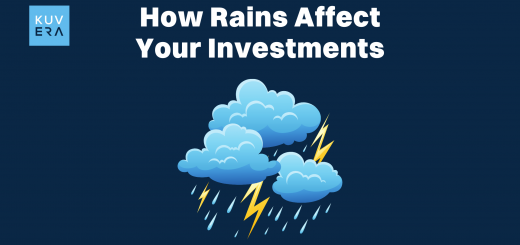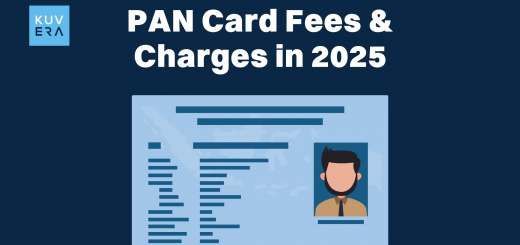Recurring Deposits (RD) are a type of savings option that can help investors save funds for the future. With an RD account, individuals can regularly save a small amount with monthly contributions for a predetermined length of time and earn interest on those deposits. Once the RD deposit matures, the principal and accrued interest are paid. As the interest rate is fixed for the duration of the RD, it is simple to calculate how much one can make by investing in recurring deposits (RD). Unlike some investment products, it does not change, making it an attractive savings scheme.
Like with any other type of savings account, the interest rate on RDs varies from bank to bank. Usually, for different time periods, interest rates in Indian banks range between 3.5-8.5%. Senior citizen’s RD accounts have an interest rate that is a little higher than those of normal accounts. Most banks give senior citizens an additional rate of between 0.25%-0.75%. The interest on recurring deposits is compounded quarterly. An RD account can be opened by any person or minor under the supervision of a legal guardian. Most banks also provide Flexi Recurring Deposit accounts. At his or her convenience, the investor in this can invest a flexible amount of money at regular intervals. The bank lets the depositor choose a core amount that will be the fundamental investment in each interval, and the investor can invest in multiples of the core amount in each interval.
India Post, which is run by the Department of Posts, was founded in 1854 and has its main office in New Delhi. With more than 1.55 lakh post offices, the organization has one of the largest postal delivery networks in the entire world. The Indian government introduced the India Post Payments Bank (IPPB) in 2018. It is a government-owned public sector bank that is also run by the Department of Posts.
India Post offers banking and remittance products and schemes. One of these is the National Savings Recurring Deposit Account scheme. The returns from a Post Office RD investment can be calculated with the assistance of a RD calculator. It is an easy-to-use application that calculates the amount of money gained and the overall corpus formed using simple variables like investment amount, interest rate, and tenure.
Features Of Post Office Recurring Deposit
The Post Office’s RD programme offers a variety of advantages and features. A few of them are:
- Limited Restrictions: To start an RD account, investors can deposit as little as Rs. 10 per month, and there is no maximum deposit amount. While starting their RD account at a post office, applicants can deposit their funds in cash or by check. For opening a recurring deposit account with the Post Office, the minimum amount is Rs.100 per month or any amount in multiples of Rs.10.
- Operations: In the event that a Post Office RD is opened in a minor’s name, it may be operated jointly. The account can be operated jointly. If a person over the age of 18 opens the account, the principal applicant may operate the account either alone or jointly as well.
- Interest: This RD plan is competitive in the market and offers a fixed rate of interest. Interest accrued on a quarterly basis is compounded, allowing investors to generate consistent returns.
- Nomination: The system permits applicants to designate a beneficiary to receive the settlement in the event of death. When opening an account at the post office, investors have the option of choosing the nomination facility. This is also possible once the account has been opened.
- Transfer of funds: RD account holders can open as many accounts as they want at the numerous post offices throughout the nation. They can also effortlessly transfer money from their RD to their savings account.
- Withdrawal: The Post Office RD makes it simple for applicants to take money out of their accounts. A year following the account’s opening, account holders are permitted to withdraw up to 50% of their deposit balance.
What Is A Post Office Recurring Deposit (RD) Calculator?
An online tool known as the Post Office RD calculator assists in calculating the maturity and interest amounts of an RD investment. By calculating the returns on a Post Office RD investment, investors may make informed financial choices. One of the post office’s savings schemes is recurring deposits. It enables investors to consistently make moderate investments. A Post Office RD’s minimum investment duration is five years. The Post Office RD’s interest is compounded four times every year. Calculating PORD interest manually can be complex and time-consuming. Therefore, one can utilize a Post Office RD calculator to determine their possible returns.
Post Office Recurring Deposit (RD) Formula
One can use the following formula to determine a Post Office Recurring Deposit (RD)’s maturity value:
M=R[(1+i)*(n-1)]/1-(1+i)^(-1/3))
Where,
M = Maturity amount
R = Monthly Installment
N = number of quarters (tenure)
i = Rate of interest/400
Let’s use Mr. Ram Prasad as an example. He intends to invest INR 2,000 per month in a Post Office Recurring Deposit. He expects an annual interest of 5.8%. The Post Office Recurring Deposit has a five-year term, which equates to 20 quarters. Mr. Prasad’s maturity value will be
M=2,000*[(1+5.8/400)*(20-1)]/1-((1+5.8/400)^(-1/3))
The maturity value = Rs. 1,39,393
The investment amount = Rs. 1,20,000
Estimated returns = Rs.19,393
Post Office RD Calculator Inputs
The following are the inputs of a Post Office RD calculator:
- Monthly Deposit Amount: The amount one intends to invest in post office RD accounts on a monthly basis.
- Recurring Deposit Term: This refers to the Post Office RD scheme’s investment period. The fixed term of a Post Office RD is 5 years (60 months).
- Recurring Deposit Interest Rate: The interest rate offered to account holders via recurring deposit schemes is known as the “recurring deposit interest rate.” 5.8% is the current interest rate.
The calculator will produce the following results after we enter the above inputs:
- Total Investment: This refers to the total sum of money that the account holder has invested during a 60-month period.
- Gained Wealth: This is the interest income that the investor has received on their investment.
- Total Corpus: It is the sum total of all investments and gains. It represents the projected value of all investments made over a five-year period.
The Benefits Of Using A Post Office Recurring Deposit Calculator
The following are the benefits of using a Post Office Recurring Deposit Calculator:
- Free to use: Anyone may use the calculator for free by accessing it online. It is free to use and can be used numerous times.
- Simple: The Post Office Recurring Deposit calculator is a simple and easy tool. One can easily enter the needed information to get the output.
- Results: The calculator’s results are quite accurate, and the likelihood of error is almost zero. One can confidently rely on the calculator’s output.
- Saves Time: Calculating the interest on an RD investment can be difficult and time-consuming. The investor can save time by using the Post Office’s RD calculator to perform the same task.
- Comparison: Choose the bank that offers the highest return by comparing its return on deposit (RD) with the Post Office’s RD.
- Future Planning: The calculator enables investors to more efficiently plan their future investments. Investors can better plan their goals by being aware of the possible returns from an investment.
Factors affecting RD Interest Rates
The interest rates on RD change from time to time. Multiple factors have an impact on RD interest rates. A few of them are discussed below.
- RBI Policies: The interest rate of all banking instruments, including recurring deposits (RD), is influenced by the Cash Reserve Ratio (CRR) and repo rate.
- State Of The Economy: In a growing economy, people take more credit. Banks frequently raise the interest rates on recurring deposits (RD) in order to increase money and satisfy credit demand. When there is a recession, the RBI releases money to the market to create liquidity. Banks decrease their RD interest rates when liquidity is high and credit demand is low.
What are the eligibility criteria for opening a Post Office Recurring Deposit account?
The following are the eligibility criteria for opening RD accounts in India:
- All Indian nationals over the age of 18 can open a Post Office Recurring Deposit account.
- A guardian on behalf of a minor
- A guardian on behalf of a person of unsound mind
- A minor above 10 years in his own name.
The Advantages Of A Recurring Deposit Account
While the recurring deposit arrangement appears attractive, it really is beneficial to customers. The following are some significant benefits of recurring deposit accounts:
- Online Investing: Online investing has made it simpler than ever to invest in recurring deposits. The internet and the digital revolution have made investing online easy and hassle-free.
- Facilitates Achieving Short-Term Goals: By making recurring deposits, investors can increase their capital and achieve their short-term goals. The important thing in this situation is to protect invested funds and avoid taking on risky positions in order to earn lucrative returns. As a result, investing in programmes like recurring deposit accounts enables them to make regular savings over time while letting their money grow risk-free.
- Lower Risk: recurring deposit schemes are as safe as savings and fixed deposit accounts. This is what makes it a popular option for risk-averse investors. Recurring deposits are ideal for people who place a greater emphasis on the safety of their invested funds than on returns.
- Simple documentation: It is not difficult to arrange the documentation needed to start a recurring deposit account. All resident individuals can open a recurring deposit with a linked savings account. This is one of the fastest, easiest, and risk-free ways to build wealth and save money.
- Disciplined Investing: The creation of wealth requires disciplined investing. A recurring deposit can help investors develop the habit of saving money, whether it be for investments or for their earnings.
- Returns: A recurring deposit account also has the important benefit of offering lucrative returns. They frequently offer interest rates that are higher than those of fixed-rate deposits. Also, these are returns with little to no risk. Regular deposits provide profitable returns, low risk, and flexibility for investment and withdrawal.
Disadvantages Of Recurring Deposit Account
The following are some of the disadvantages of the recurring deposit schemes:
- Premature Withdrawal: Recurring deposits have a lock-in time that is chosen when the account is opened. Early withdrawals are permitted, although there is a penalty associated with it.
- Returns: While the returns of RD schemes sound attractive, they are still modest when compared to market-linked returns, which are often provided by mutual funds and other stock market products like shares and bonds. While there is risk associated with investing in market-linked instruments, investors are typically rewarded for taking on that risk in the form of higher returns.
- Liquidity: There may be instances in which investors might require money right away. Recurring deposits lock in the funds for the predetermined tenure the investments are made for. This can lead to liquidity problems if they suddenly require money unless the money is put in flexible RD accounts.
- Monthly Installments: While disciplined investing is good, it can occasionally cause problems, particularly when an investor is running short of funds. Investors will always need to prioritize and put aside the monthly investment amount for the RD account. Non-payment of installments may incur unnecessary penalty fees.
Post Office RD Interest Rates 2022
The Post Office RD interest rate is determined by the government and announced every quarter.
| Quarter | Interest Rate |
| July 2020 – Till Date | 5.8% |
| Quarter 1—April 2020 to June 2020 | 5.8% |
| Quarter 4 – Jan 2020 to Mar 2020 | 7.2% |
| Quarter 3 – Oct 2019 to Dec 2019 | 7.2% |
| Quarter 2 – Jul 2019 to Sep 2019 | 7.2% |
| Quarter 1 – Apr 2019 to Jun 2019 | 7.3% |
| Quarter 4 – Jan 2019 to Mar 2019 | 7.3% |
| Quarter 3 – Oct 2018 to Dec 2018 | 7.3% |
| Quarter 2 – Jul 2018 to Sep 2018 | 6.9% |
| Quarter 1 – Apr 2018 to Jun 2018 | 6.9% |
| Quarter 4 – Jan 2018 to Mar 2018 | 6.9% |
| Quarter 3 – Oct 2017 to Dec 2017 | 7.1% |
| Quarter 2 – Jul 2017 to Sep 2017 | 7.1% |
| Quarter 1 – Apr 2017 to Jun 2017 | 7.2% |
| Quarter 4 – Jan 2017 to Mar 2017 | 7.3% |
| Quarter 3 – Oct 2016 to Dec 2016 | 7.3% |
| Quarter 2 – Jul 2016 to Sep 2016 | 7.4% |
| Quarter 1 – Apr 2016 to Jun 2016 | 7.4% |
Frequently Asked Questions (FAQs)
-
What are Recurring Deposits (RD)?
Recurring Deposits (RDs) are a type of investment that demands recurring monthly fixed deposits for a set period of time and earns an interest rate. Once an RD matures, the investor receives a lump sum plus interest.
Interested in how we think about the markets?
Read more: Zen And The Art Of Investing
Watch/hear on YouTube:
Start investing through a platform that brings goal planning and investing to your fingertips. Visit Kuvera.in to discover Direct Plans and Fixed Deposits and start investing today.
#MutualFundSahiHai #KuveraSabseSahiHai!











